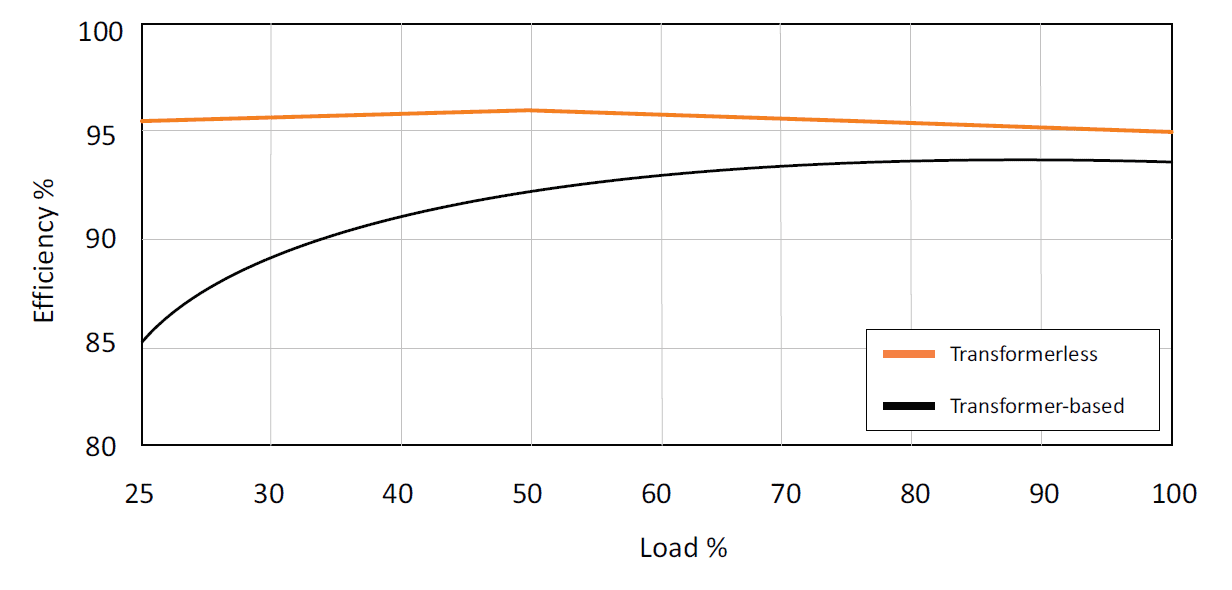Alan Luscombe, director at KOHLER Uninterruptible Power Ltd., a KOHLER company, looks at the significance of Power Usage Effectiveness (PUE) for datacentres, and at how modern, efficient UPS design can contribute to this metric.
As data centre size, energy costs and green legislation demands increase, so does the pressure to improve efficiency in data centres. One popular metric for checking this is Power Usage Effectiveness, or PUE, which was first introduced in 2006 and then promoted by the Green Grid in 2007.
PUE compares a data centre’s total electrical energy consumption – when power conversion, cooling, lighting and other overheads are accounted for – with the amount taken by the ICT equipment performing useful data processing and communications tasks. It is expressed as:

This means that an ideal data centre would have a PUE of 1, where all incoming energy is consumed by useful computing tasks. While real facilities cannot attain this value, they have been approaching it steadily over recent years. Google’s entire fleet of data centres has achieved a comprehensive trailing 12-month PUE of 1.12 for all seasons, including all sources of overhead.
There are limitations to be considered when applying PUE or comparing data centres. For example, data centres around the world are subject to widely varying climactic conditions. A facility in a hot country will have a large cooling load compared with an identical installation in a more temperate zone. This is significant, as cooling can account for up to 30% of a facility’s power. Loading on the data centre’s servers is also a factor, as server utilisation levels affect efficiency.
UPSs and PUE
In Google’s PUE calculations, as well as those of most other operators, the UPS installation is considered as part of the infrastructure overhead; therefore, improving its efficiency will reduce PUE. Accordingly, let’s look at the UPS efficiency options available to data centre operators.
The first step is to review your UPS installation, as it may have some surprises. It could be older than you think, and possibly using transformer-based technology rather than the transformerless approach that has now replaced it. This has significant energy implications, as eliminating the transformer increases UPS efficiency by around five percent, and possibly more if the UPS is only partially loaded – see Fig.1. Further savings arise as increasing the UPS’s efficiency also reduces the cooling load.
Fig.1: UPS efficiency curve (ac to ac)
Note that the transformerless UPS efficiency curve remains relatively flat over the entire load range. This means that even in a ‘1+1’ redundant system, where no UPS is more than 50% loaded, efficiency remains high.
Some modular UPS systems also offer a smart operating mode – known as the Xtra VFI mode on KUP’s KOHLER PW 9500 DPA – which automatically switches excess modules to standby if the load drops. They remain on standby and ready to resume active operation immediately if the load recovers or the mains fails. This measure is especially effective for loads of less than 25 percent of full capacity.
Another possibility, suitable for some but certainly not all installations, is to run the UPS in Eco mode. Power from the incoming mains supply bypasses the UPS conversion stages to feed the load directly by default, only routing through these stages if power problems arise. Eliminating power conversion losses allows UPS efficiency of up to 99% to be achieved, but loads are exposed to any mains-borne spikes or other problems during normal operation.
Conclusion
Improving UPS efficiency can contribute to better data centre PUE performance. This article has discussed the options for this available to UPS operators who invest in the right, transformerless technology UPS systems.
Article published in the July/August 2017 edition of Electrical Review magazine





